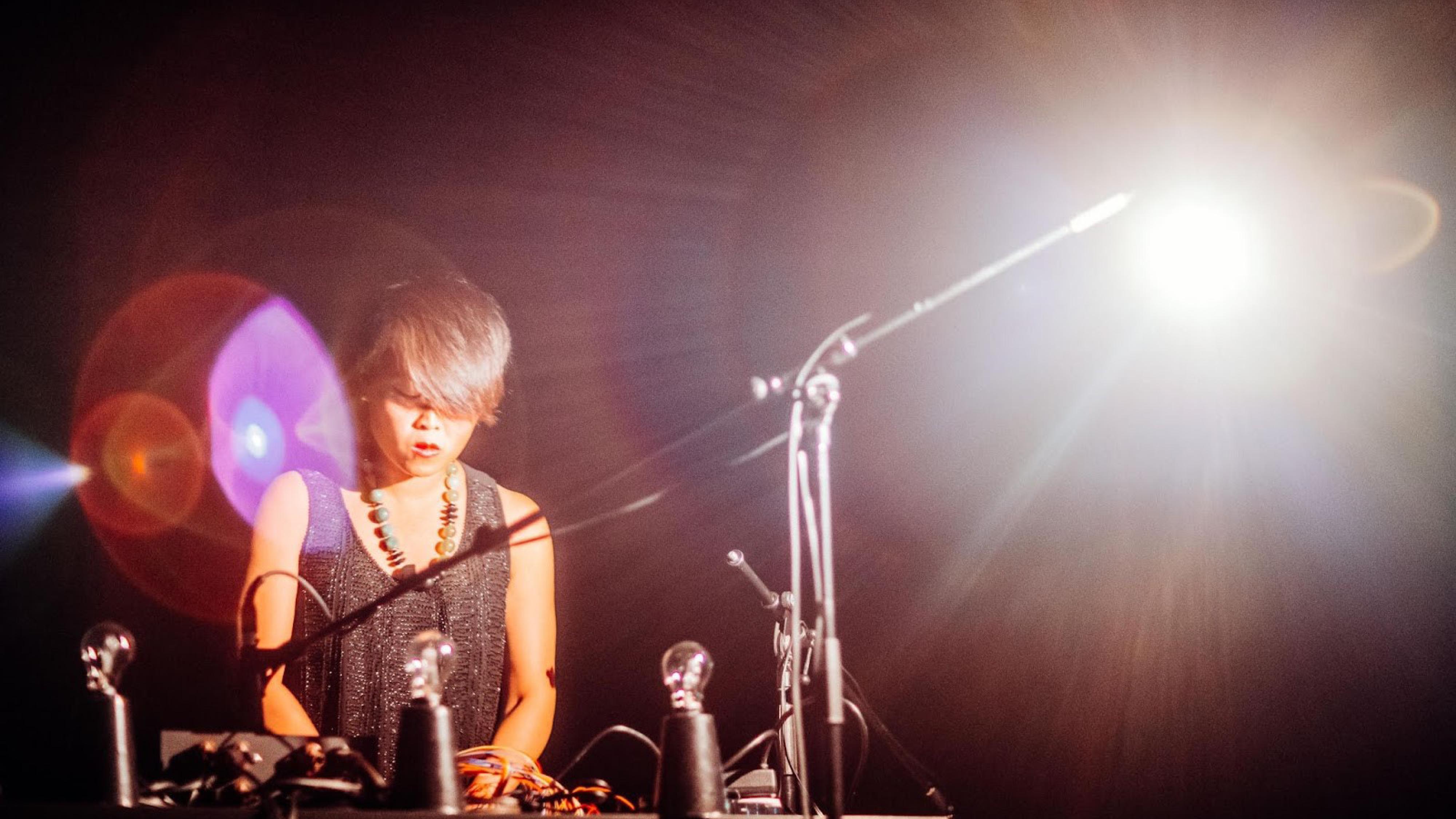(1) Body as a site for intermediality and transmediality.
My work was first motivated by thinking about the capacity of musically-trained bodies and what they could do beyond traditional instruments and beyond sounds. In my solo work “Bulbble”, I developed an instrumental setup, which is made of self-built capacitive sensors, arduino, relays and lightbulbs. The instrument allows me to perform the interplay between lights, shadows, the sounds of relays and their modulated pitches.
I like to consider light and sound as musical counterpoints. Conceptualizing light as music demands us to perceive music multimodally, with its colors, rhythms, visual intensities, temperatures, and our corporeal relationships with the space, etc. To incorporate and integrate aspects of light and elements of sound with equal weights in a musical act is to acknowledge that music lies beyond sonic materiality and is undoubtedly transmedial.
In my duo Transsonic, with guitarist and electronic musician, Nicola L. Hein. We formed a duo that primarily explores the interplay between light and sound, which expands the idea of transmedial music even further.
(2) Body as an interface for composing-performing feedback loop.
In my “Lazy Studies”, I modified a dining turntable into a performative device for feedback between a microphone and three speakers. The solo performing act on my instrument is a conversation between my own musical identities in feedback loop. Through my body, as the central point for sensory reception, I compose and perform simultaneously through turning the table, changing the relationship between the speakers and the microphone, feeling the tactile vibrations on my hand and body and listening to the sonic quality of the feedback in a particular room acoustics and how that changes my bodily perception of the space . These actions form a feedback loop of composing and performing, which has becomes very central to my musical practice.
(3) Body as navigation for exploring human-machine relationships and listening to non-human affordances.
In my collaboration with Oakland-based sound artist Laetitia Sonami who has a long-standing practice performing electronics with her body gestures, we created a virtual instrument that allows us to perform together between Berlin and Oakland. With the virtual instrument, we developed electronics that allows us to perform and communicate with our bodies, via videos on internet.
In my collaboration with Ken Ueno, who is an established performer for his extended vocal techniques with microphone and megaphone, we developed a performance that instrumentalized the conferencing software Zoom and explored its software limitations and failure as the artistic affordances of our piece.
Conclusion
Building instruments, be it physical or virtual machines, for my own body and others’ has allowed me to revisit the concept of technology. Through thinking about the human-machine relationships in building my musical instruments, I am also keen to develop the body as technology. By comparing human bodies to technology, the boundary between the human and the machine is dismantled to acknowledge its fluidity in the cybernetic approach of listening and music making. I like to think how framing musical bodies in different ways could allow an alternative musical creativity, expanding and challenging the contemporary musical practices of our time.
Viola Yip arbeitet mit Klang und selbstgebauten Instrumenten an den Schnittstellen von Komposition, Performance, Klangkunst und erkundet die Beziehungen von Medien, Materialien, Raum und unseren musikalischen Körpern.
